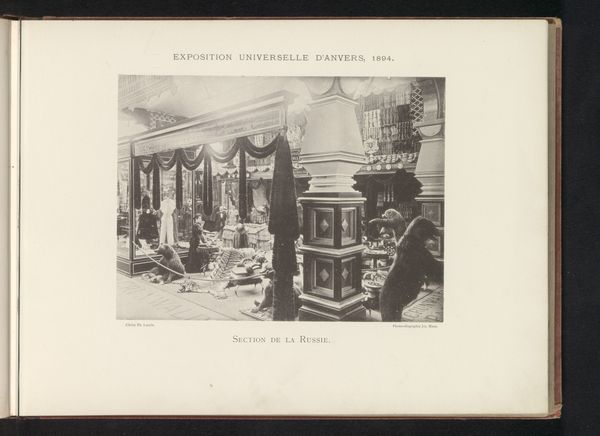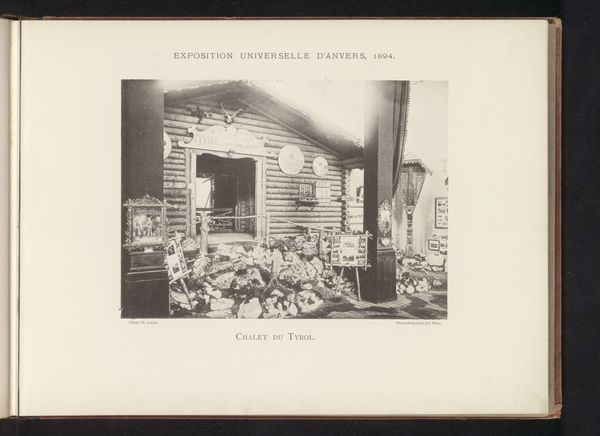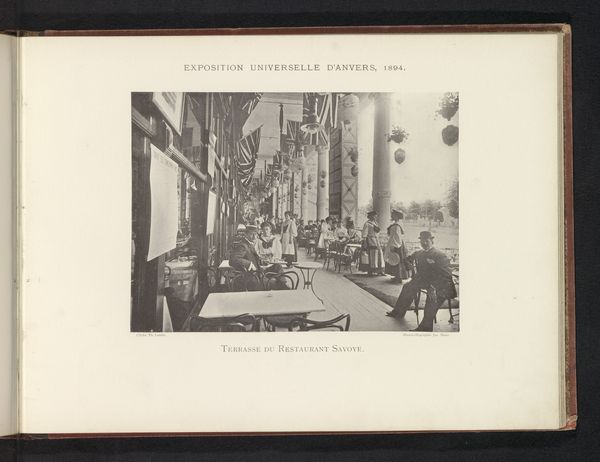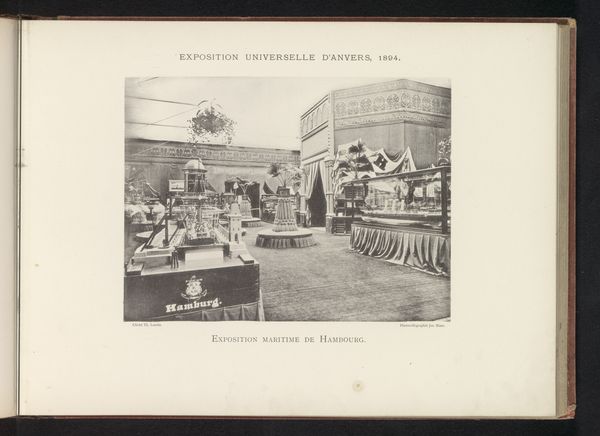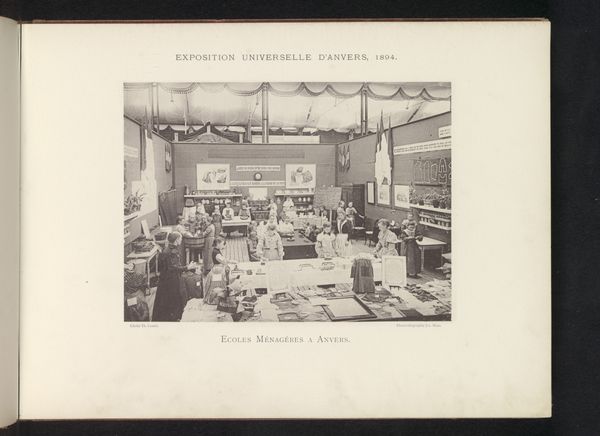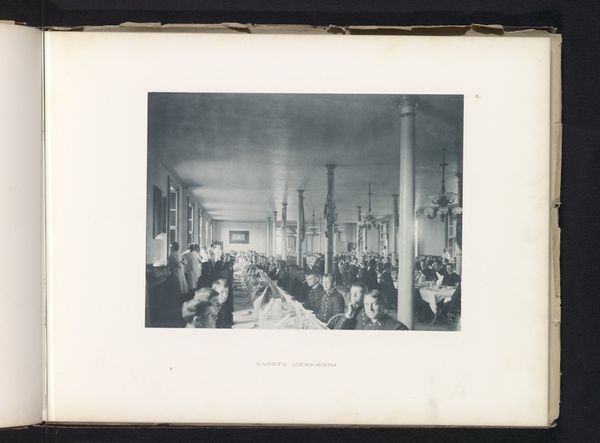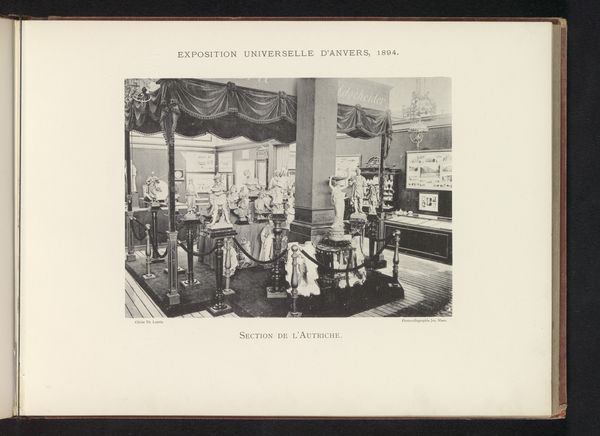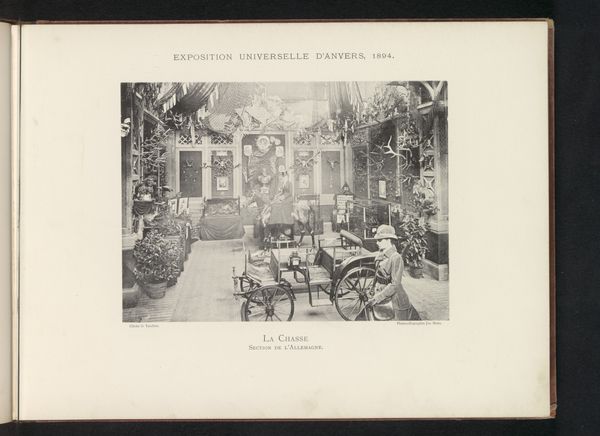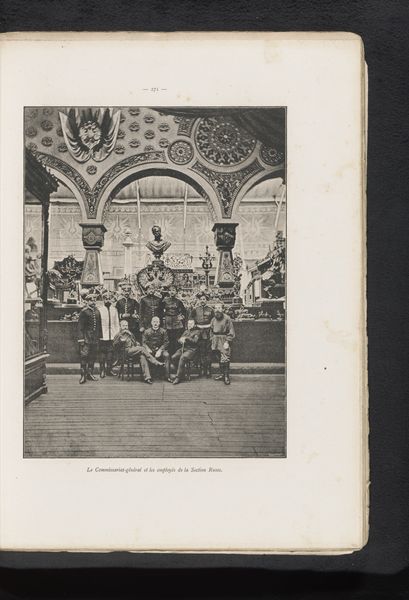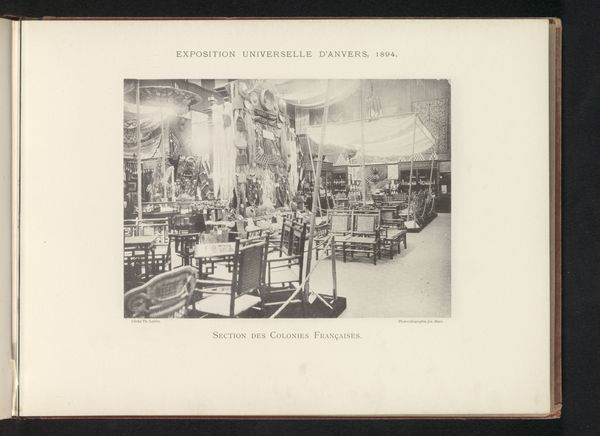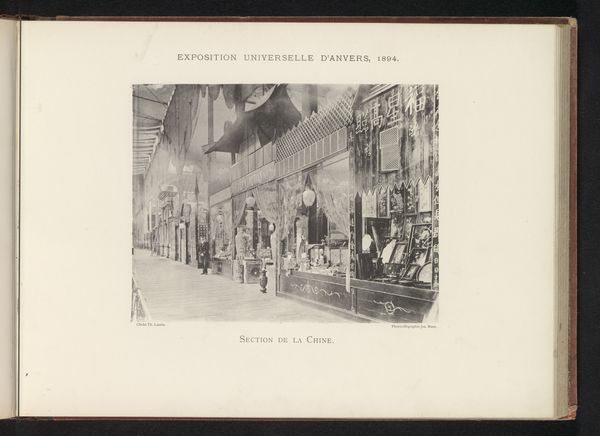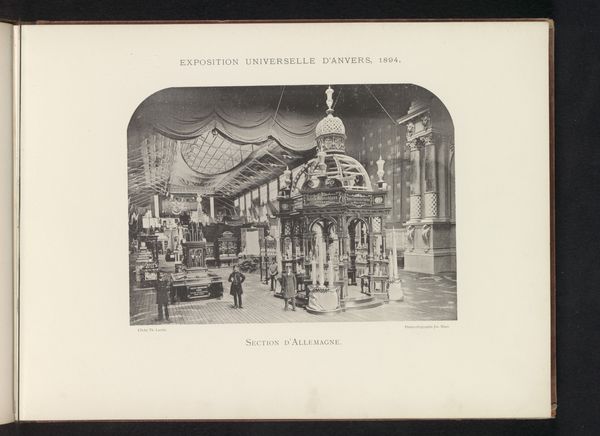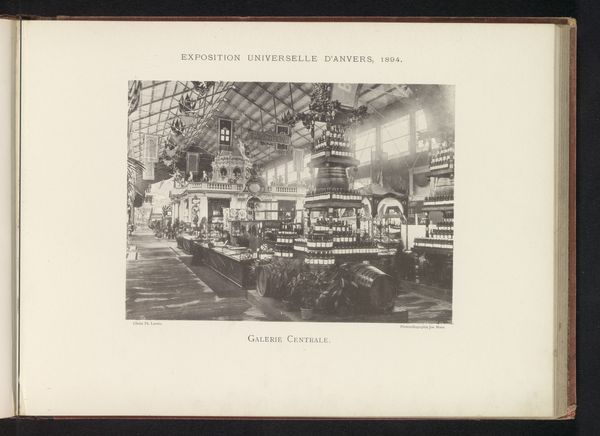
Expositie van Russische bontproducten tijdens de wereldtentoonstelling te Antwerpen 1894
0:00
0:00
Dimensions: height 160 mm, width 220 mm
Copyright: Rijks Museum: Open Domain
Editor: This photograph by Th. Lantin, taken in 1894, is titled "Expositie van Russische bontproducten tijdens de wereldtentoonstelling te Antwerpen," showcasing a display of Russian furs at the World's Fair in Antwerp. I find it incredibly unsettling, actually. The dressed bears presenting these goods… What’s your take on this work? Curator: It’s indeed unsettling, and rightly so. This image operates within a long and troubling history of representing colonized or "exotic" peoples. Consider how the presentation of Russian goods, policed and presented by figures costumed as bears, contributes to an ‘Orientalist’ gaze. What narrative is being constructed here about Russia, and by whom? Editor: So, the photograph isn’t simply documenting a trade show; it's participating in a broader cultural dialogue, or, maybe, a power play? The animals, I mean the bears— Curator: Exactly. These dressed bears are symbolic. They reflect a perception, or a projection, of Russia as a land of raw, untamed nature tamed for consumption. Who benefits from this representation, and what are its political implications? We might also explore how the commodification of furs intersects with histories of colonialism and exploitation, both human and animal. Do you see the implications of class in this exposition? Editor: I hadn't thought about the class implications explicitly, but the opulence of furs… it signifies luxury only attainable to the very wealthy. Are the displays intended to inspire aspiration? Curator: It is definitely selling an aspirational lifestyle that depends on a very unequal distribution of power. By analyzing this photograph through an intersectional lens, considering race, class, gender (through the implicit roles assigned to 'civilized' viewers versus 'exotic' commodities), and species, we can unravel its complex historical and social meanings. Editor: This really puts the photograph into perspective, transforming what I saw as a peculiar scene into a statement, maybe even a form of propaganda. Curator: Precisely! Seeing the work as connected with exploitation practices opens space to a deeper level of understanding and questioning our contemporary realities.
Comments
No comments
Be the first to comment and join the conversation on the ultimate creative platform.
